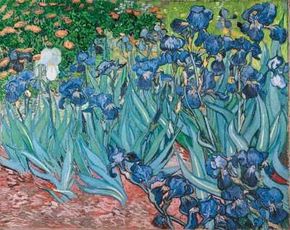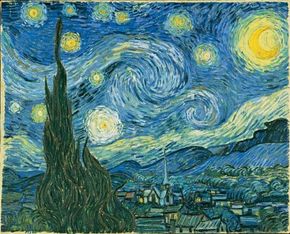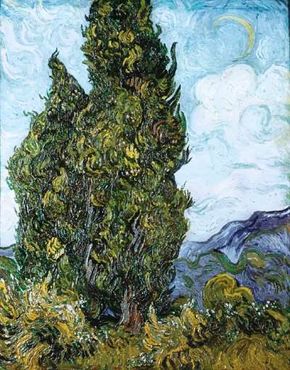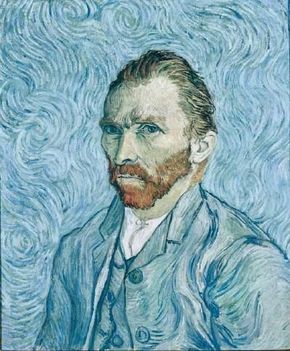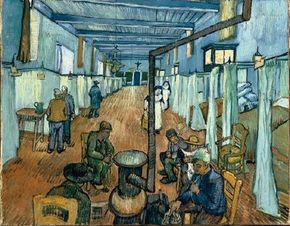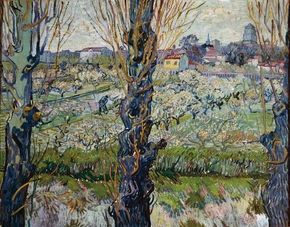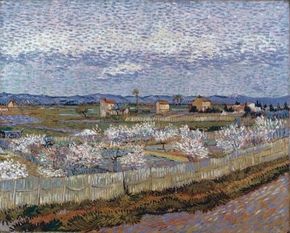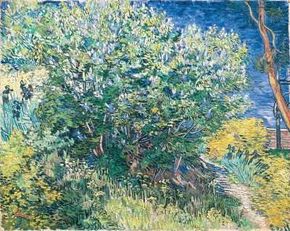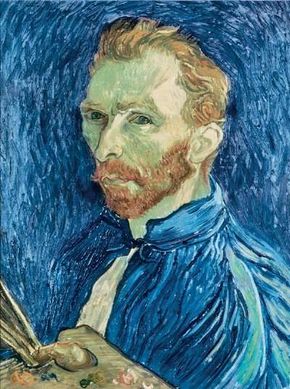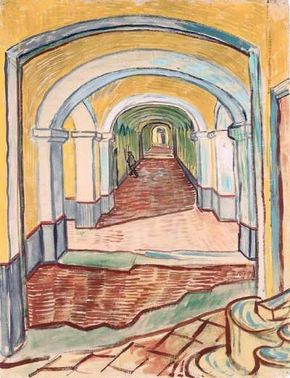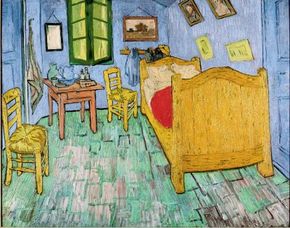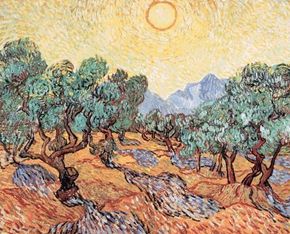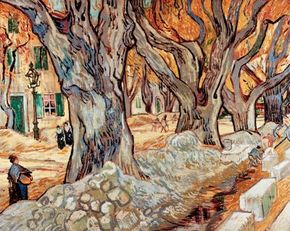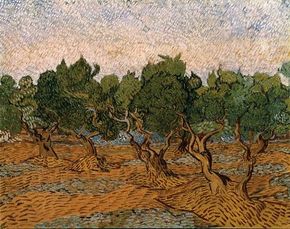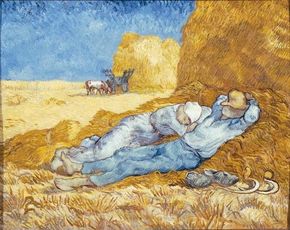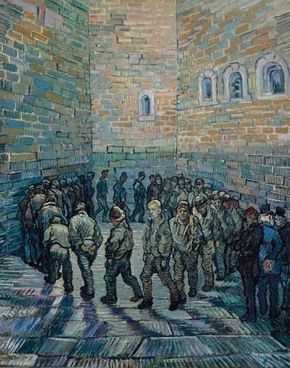Unable to live securely on his own in Arles, Vincent voluntarily entered Saint-Paul-de-Mausole, a psychiatric asylum in nearby Saint-Rémy-de-Provence. When Vincent entered the asylum on May 8, 1889, his condition was diagnosed as a form of epilepsy. As long as he remained stable, the doctors allowed Vincent to paint, though for the first weeks of his residence, he was confined to the hospital for supervision.
By mid-June, he was permitted to paint in the fields surrounding Saint-Rémy in the company of an attendant. In his letters to his brother Theo, van Gogh was eager for news of the art world in Paris. Isolated from the energetic exchange of ideas that he had experienced in Paris, as well as when living with Gauguin, Vincent reflected upon artists and writers who articulated a deep understanding of current human conditions. It was Vincent's hope that his own art could do the same.
Advertisement
In July, while painting in the fields on the outskirts of Saint-Rémy, Vincent van Gogh suffered a severe seizure that left him debilitated for more than five weeks. He complained to Theo that he felt "like a fool going and asking doctors permission to make pictures," but he fully grasped the seriousness of his condition, realizing that "a more violent attack may forever destroy my power to paint." With a lack of models, he returned to the practice of copying reproductions; in them, he revived the spirit of consolation and solace he had found before in nature.
Follow the links below to learn more about some of the most famous works Vincent van Gogh painted during his time in Saint-Rémy.
The Starry Night: Vincent van Gogh's The Starry Night is one of the art world's best-known paintings. Learn about The Starry Night, which Vincent van Gogh painted from a hospital window.
Cypresses: Cypresses, by Vincent van Gogh, depicts a grove of trees just outside the asylum where van Gogh stayed in 1889. Read about van Gogh's Cypresses, which reminded Vincent of his famous sunflowers.
Pietà (After Delacroix): Pieta (After Delacroix), by Vincent van Gogh, reflects the importance of the artist Eugène Delacroix's theories on van Gogh's work. Read about van Gogh's Pieta.
Self-Portrait: This 1889 Self-Portrait is one of the last of the many self-depictions van Gogh painted. Read about van Gogh's Self-Portrait, noted by critics for its intense emotion.
Ward of Arles Hospital: Ward of Arles Hospital, by Vincent van Gogh, was completed while van Gogh was hospitalized in 1889. Learn about Ward of Arles Hospital.
Orchard in Blossom with View of Arles: Orchard in Blossom with View of Arles, by Vincent van Gogh, is a superior example of the artist's unique blend of lightness and intensity. Learn about van Gogh's Orchard in Blossom with View of Arles, which was completed toward the end of his stay in Arles.
Le Crau with Peach Trees in Blossom: Vincent van Gogh's Le Crau with Peach Trees in Blossom reflects the artist's love for the tranquil setting of Provence. Learn about Le Crau with Peach Trees in Blossom.
Lilacs: Lilacs, by Vincent van Gogh, was completed in 1889, after van Gogh checked himself into an asylum for treatment of his seizures. Learn about van Gogh's Lilacs, painted on the grounds of the Saint-Paul-de-Mausole mental asylum.
Irises: Vincent van Gogh's Irises demonstrates van Gogh's trademark vivid colors and daring brush strokes. Read about Irises, another painting depicting the grounds of the mental asylum in Saint-Rémy.
Self-Portrait: Vincent van Gogh's 1889 Self-Portrait was painted after a series of damaging seizures. Read about van Gogh's Self-Portrait, which depicts the artist's haggard condition.
A Corridor in the Asylum: A Corridor in the Asylum, by Vincent van Gogh, is compared by many critics to his earlier painting titled Ward in the Arles Hospital. Find out about van Gogh's A Corridor in the Asylum, which expresses van Gogh's increasing frustration with his confinement.
The Bedroom: Vincent van Gogh's The Bedroom is a recreation of the painting by the same name that van Gogh painted while living in the Yellow House. Read about The Bedroom, which shows the artist's nostalgia for his life in Arles.
The Olive Trees: The Olive Trees, by Vincent van Gogh, depicts an olive grove just outside the grounds of the asylum in Saint-Rémy. Read about Vincent van Gogh's The Olive Trees, reminiscent of some of his best paintings from Arles.
The Large Plane Trees: The Large Plane Trees, by Vincent van Gogh, is an excellent example of van Gogh's personal style of "yellow painting." Read about Vincent van Gogh's The Large Plane Trees.
Olive Grove: Vincent van Gogh's Olive Grove is one of several studies of the olive trees of Saint-Rémy that van Gogh would complete. Read about Olive Grove by Vincent van Gogh.
Noon: Rest from Work (after Millet): Noon: Rest from Work (After Millet) was painted by Vincent van Gogh after a series of epileptic attacks in early 1890. Read about Noon: Rest from Work (After Millet), by Vincent van Gogh, which exhibits the influence of the artist Jean-Francois Millet on Vincent van Gogh.
Prisoners Exercising (After Doré): Vincent van Gogh's Prisoners Exercising (After Doré) is a copy of a print by Gustave Doré. Read about van Gogh's Prisoners Exercising (After Doré), which some critics claim reflects van Gogh's discontent with his life in Saint-Rémy.
On the next page, we'll look at one of Vincent van Gogh's most recognizable paintings.
To learn more about art, famous artists, and art history, check out:
Advertisement
